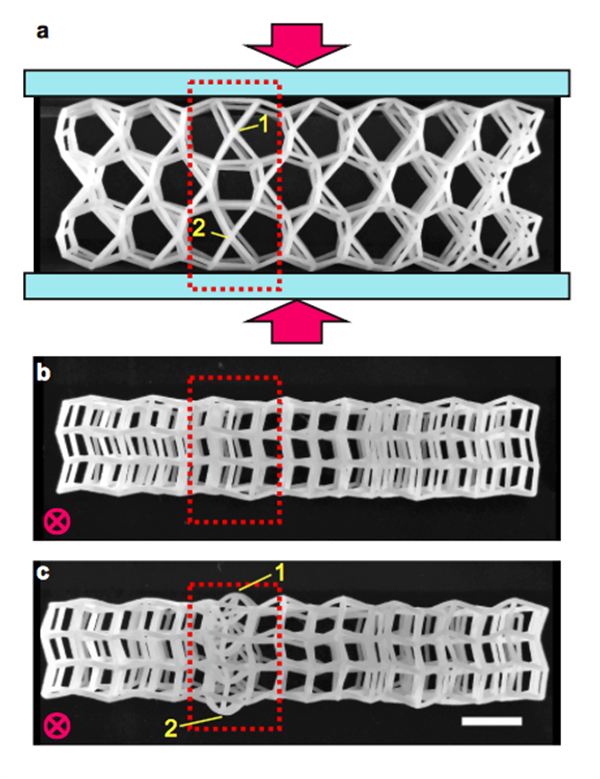Dutch researchers develop 3D printing metamaterials that buckles on demand

Amongst all of the new additive manufacturing technologies and range of applications that have been released over the past couple of years, one of the most exciting areas of research hasn’t necessarily been in the technologies themselves but rather, the material science behind what is actually being used to create the psychical objects - many of which is done at a nano-scale.
More recently, researchers from Leiden University in the Netherlands has developed a metamaterial that is capable of buckling - or, bending under strain - on command.

While in most cases the buckling would not be a desired feature and is more of a sign of weakness in a material, the new metamaterial is capable of singling out specific regions that can buckle under the external stress whereas other chosen areas are able to retain their form unscathed.
The research - which was done in the Topological Mechanics Lab at the school and was led by Vincenzo Vitelli - is published in this week's edition of the Proceedings of the National Academy of Sciences and helps confirm - similar to recent material research that has been done at MIT - that the materials of the future will likely be smart in that they will be capable of assembling or disassembling themselves into different shapes - something that is only possible to embed through the use of additive manufacturing techniques.

“We have demonstrated that piling up localized states of self-stress in a small portion of an otherwise bending- dominated cellular metamaterial can induce a local propensity for buckling,” wrote the researchers in their paper. “Whereas this principle is of general applicability, our buckling regions exploit topological states of self-stress.”
Among other benefits of these ‘smart’ materials include the ability to ‘program’ specific geometry or topology characteristics that can be later activated by the user or the material itself depending on external conditions. The ability to selectively buckle specified regions of a material has a wide range of applications ranging from traditional product design - such as the ability to create objects with shape memory - to medical applications such as the ability to create cell scaffolding that is capable of adapting itself to a specific region within the body.

While the current experiment was focused on developing a flexible plastic prototype, the results of the mechanical structure worked as designed and reveals that creating similar structures with other materials is indeed possible. As for how long it will be before we start to see more applications for these ‘smart’ materials is still unknown - however it’s safe to say that it will be sooner rather than later.







